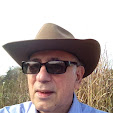
Mountain (Berg), 1909
Oil and tempera on canvas, 109 x 109 cm
Stadtische Galerie im Lenbachhaus, Munich , Gabriele Munter-Stiftung, 1957
Riding Couple (Reitendes Paar), 1907
Oil on canvas, 55 x 50.5 cm
Stadtische Galerie im Lenbachhuas, Munich, Gabriele Munter- Stiftung, 1957

Colorful Life (Motley Life) (Das Bunte Leben), 1907
Tempera on canvas 130 x 162.5 cm
Bayerische Landesbank, on permanent loan to the Stadtische Galerie im Lenbachhaus, Munich
What is fascinating and of primary interest in this discussion is the transformation and metamorphosis of Kandinsky from an artist depicting the interaction of Russian religious and secular life -- with strong bold colors-- to an abstract interpreter of the human spiritual experience in more muted soft hues.
Let's go back to the Colorful Life and focus on a few images that we can make out: there is the spiritual icon of the saintly mom with flowing chalk-like hair (front, left), the lover's embrace (center right), the solitary rower on the river, the other- worldly intertwined brothers (front center).
In the Mountain (Berg), 1909, painted just 2 years later, Kandinsky's once recognizable profuse images have vaporized, so to speak, and definitely have dematerialized, so that now we have two figures who dominate front and center at the base of triangular mountain- motif (suggestive of the Trinity) with a strong bold black zig zag line serving as a lead-in to some religious melodrama; one image is an abstract figure with red gown, blank face and long flowing blue hair atop a horse barely recognizable in its pastel cut- out blue form. This figure looks across a truncated tombstone to another etherialized brother with a prayer book in hand. At the top of the triangle is a floating representation of 'City of God', the Kremlin of earlier paintings.
The author is much indebted to The Greenwich, Connecticut Library for their recent acquisition of the Guggenheim Museum volume on Kandinsky, published in 2009 by the Solomon R. Guggenhim Foundation, New York. This book is so beautifully laid out and the plates are of the highest quality. The book was published on the occasion of the exhibition Kandinsky which was shown in New York City from September 18, 2009-January 13, 2010. For my blog on this amazing exhibit see Picasso and Kandinsky at the Guggenheim's 50th Anniversary Exhibit.



1 comment:
Interesting Kandinsky piece. You might be interested in looking at a film I made "Kandinsky and the Russian House", shot on location in Germany and Russia. It uses archive footage and some computer graphics to bring alive the story of Kandisnky's artistic development concentrating on his time in Germany. The film is part of a series of six about the Russian avant-garde of the 1920s and 30s. For more information see www.copernicusfilms.narod.ru
Post a Comment